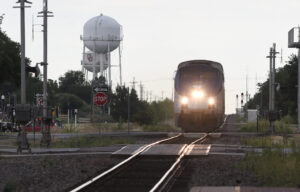Ah, we’ve reached that time of year again, when we “fall back” and set the clocks back an hour just as we’re getting used to the idea of getting up before dawn. But wait, wasn’t this concept of Daylight Savings Time supposed to be going away? It made national headlines for a while but then died off rather abruptly. What happened?
On Friday, the situation reared its head again when Senator Blake “Cowboy” Stephens filed legislation to continue his efforts to “Lock the Clock” in Oklahoma, using Senate Bill 1200 to keep Daylight Savings Time year-round.
“There are so many benefits to staying in Daylight Saving Time year-round,” Stephens said. “It would provide more daylight for commerce, exercise, and other outdoor activities, but we would also see less car accidents, crime, depression, and fewer heart attacks and other stress-related health incidents often attributed to the time change. I’m hopeful my legislative colleagues will listen to the majority of Oklahomans in support of this measure and help me get it to the governor’s desk.”
As a trigger law, SB 1200 would go into effect following the passage of the federal Sunshine Protection Act by Congress, which would allow states to permanently adopt DST or practice standard time. Nearly half of the states have already passed legislation to stop their clock, with 19 choosing DST. According to the National Conference of State Legislatures (NCSL), at least 29 other states have considered or are considering DST legislation.
That bill will be available for consideration when the Legislature convenes in February.
To fall back or not to fall back?
State Representative Kevin West, R-Moore, believes the correct approach is not to keep the Daylight Savings Time, but to instead keep the standard time and make it permanent.
“The only way to lock the clock in Oklahoma and to stop this twice-yearly time change is to switch to permanent standard time,” West said. “I’ve long advocated for this and after my recent interim study on the issue, I realize it is as important as ever to continue my efforts.”
West said the aim of his study was to raise awareness among legislators about the history of daylight saving time and to detail the benefits of moving the state to permanent standard time. He invited experts to discuss the science of time change and the detriments of changing the clock twice yearly.
West said he’s been asked why the state doesn’t just adopt permanent daylight saving time year-round instead of standard time. Federal regulations, however, specify states can exempt themselves from daylight saving time but not standard time.
Some states have sought a waiver to be allowed to adopt daylight saving time year-round but without success. West also pointed to the Sunshine Protection Act in Congress, which would make daylight saving time permanent, but the act has not passed the last two years, and exemptions for some states would still remain.
States that choose not to opt out of daylight saving time are required to set their clocks forward an hour at 2 a.m. the second Sunday of March each year and back an hour at 2 a.m. the first Sunday of November.
The U.S. Congress first implemented daylight saving time through the Standard Time Act in 1918 during World War I as a way to “add” more daylight hours to conserve energy. The act also established five time zones across the U.S. The Uniform Time Act in 1966 mandated the country use daylight saving time but allowed states to opt-out and to stay on standard time year-round.
The thought behind daylight saving time is that by setting the clocks back an hour in November, more daylight time is gained in the early mornings. When an hour is added in March, more daylight is gained in the evenings.
Permanent daylight saving time was enacted in 1974, but Oklahoma and other states petitioned the federal government to repeal it because of problems caused by it being dark until after 8 a.m. in the winter. There were complaints of children going to school in the dark and employees starting the work day before the sun rose. The permanent act was repealed in 1975.
West said there are additional concerns such as health-related risks, increased auto accidents and work-related injuries that rise when daylight comes after people start their day.
West said he’s received an enormous amount of positive feedback from Oklahomans who support not having to change the clock twice yearly, specifically noting the time it takes to adjust to the change. He’s run legislation in the past to move the state to permanent standard time. It’s something he’ll consider again for the upcoming legislative session that starts in February.










